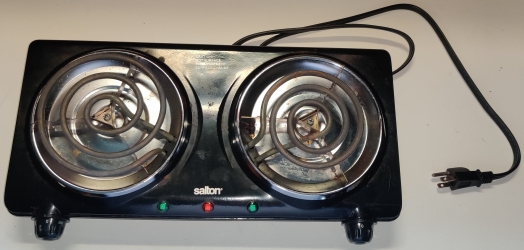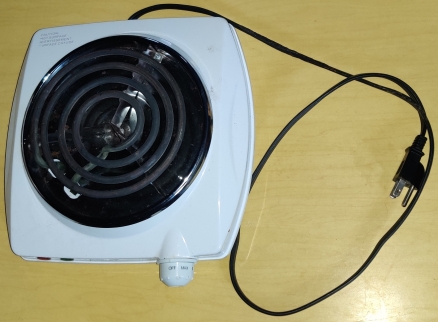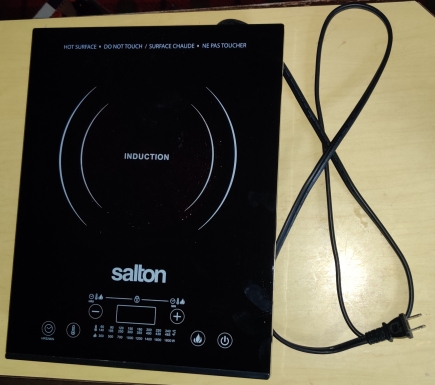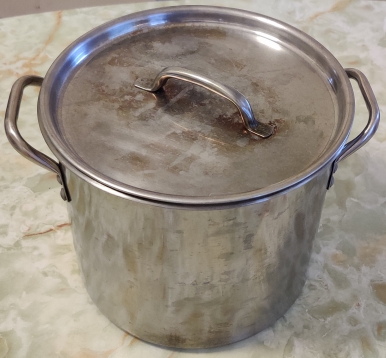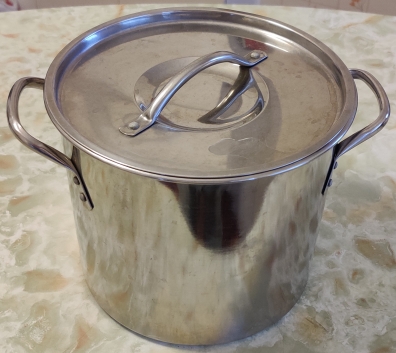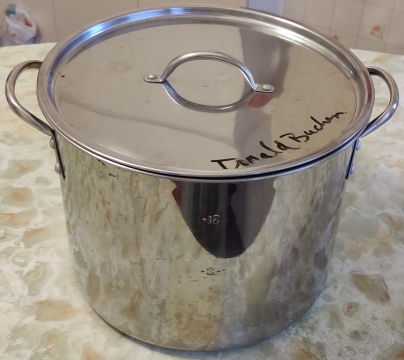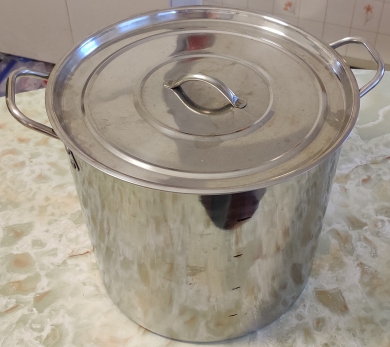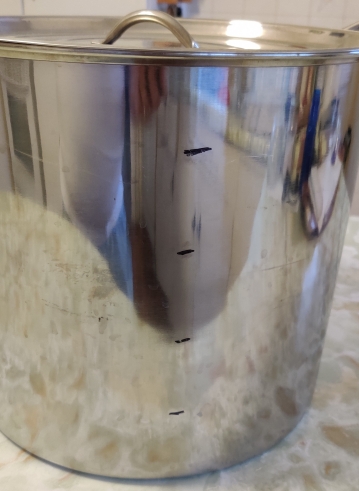I originally posted on cooking relatively large amounts – relative to routine home cooking, anyway – of soup for my church using portable countertop stoves I had purchased over time following having made some soup for the coffee / social hour. The intended central theme of the post, besides initially to discuss making soup for a group, was my collection of portable countertop stoves, and using them in non-traditional locations.
I was recently on a cruise; during which I attended some of the cooking demonstrations that were offered. The various subjects included cooking with chilies, and two sessions on Mediterranean cooking styles and dishes. Although these specific subjects were not interests of mine, a general interest character to the cooking demonstrations, that they were sometimes an activity to do with my aunt, and that the demonstrations were generally pleasant activities in which to participate at those moments, were attractions.
Various recipes prepared included a rice and chili sauce dish; lamb meatballs and couscous; and pasta with a garlic and olive oil sauce.
During the first of the cooking demonstrations, I became fascinated by two of the central cooking appliances: Two portable countertop induction stoves, incidentally of the exact same brand and model of which I own; this latter detail piqued my curiosity. I also realized later on while in the buffet lines and watching the cooks prepare meals in front of guests that there were a number of portable countertop induction stoves in use; in this particular case, usually to prepare fried eggs and omelettes, both to order. Some were of the same consumer grade make and model I had, and some were of a different brand, and I suspect of a commercial grade instead of a consumer grade.
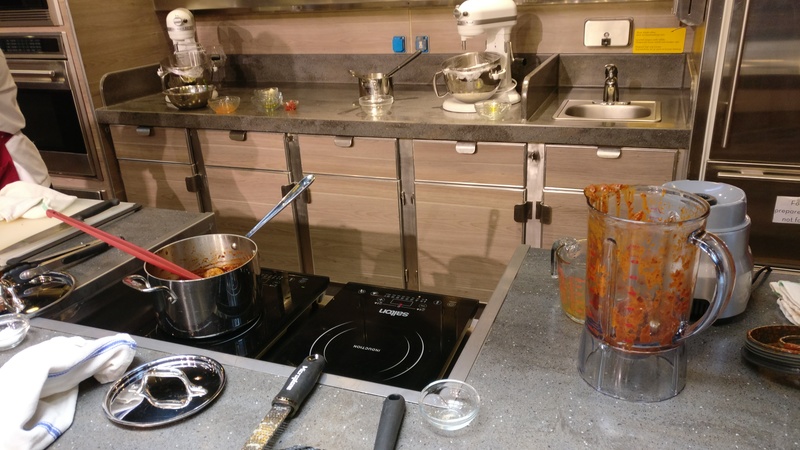
The chef leading the demonstration was unsurprisingly confident and competent (although no doubt following a script, flawlessly and naturally), and she used the two countertop portable stoves as though she were using any other more traditional stove; I found her ease in using these appliances fascinating.
I imagine that induction cooktops were chosen for convenience, more precise cooking control, and perhaps electrical efficiency. No doubt ventilation and fire issues were also considered, (ie. in comparison to the use of gaseous or liquid fuel stoves) despite the presence of a fume hood, and no doubt the presence of a fire suppression system. Perhaps the promoters even considered the use of consumer grade portable countertop induction stoves as easier and overall less expensive to replace in the case of failure, since depending on the ports of call, they could easily send someone to the local department store with a credit card in order to purchase replacement units. But I digress.
Unfortunately, we did not get to taste the food cooked in front of us due to an apparent policy to not serve the food prepared during the demonstrations. To a degree, this may also have made it easier for the various demonstrations to be developed since they could be designed around relatively small amounts of overall food to be prepared, such as one or two servings, which would also make it time efficient (and incidentally somewhat more cost effective at least on the level of ingredients required).
While this case partly goes against the charm I see in portable countertop stoves – the ability to cook anywhere, any time, with portable portable countertop stoves instead of traditional stoves– I found it fascinating that this instance shows how portable countertop stoves can be used for everyday cooking – well that’s what they’re designed for! – and more generally as replacements for a traditional stovetop.
I admit it: I’m also excited to just see one of the things I bought actually being used by someone besides myself, and by someone in the know to boot. 🙂
Followup to the original post, which is mostly a rehashing of the original post:
My original vision for the post, which was somewhat blurry when I began writing, was in broad, vague, terms swirling about in my head. It surrounded the notion of “the joy of cooking” and doing so in a mobile fashion with the portable countertop stoves, anywhere, anytime, as long as you had a space and electricity. A part of my enthusiasm came from having once seen a home kitchen without a traditional stove and oven, but rather a 1500 watt portable countertop stove with two burners like one I have, and a toaster oven (which is in my mind an ubiquitously common kitchen appliance to begin with anyway). I certainly wanted to discuss the joy of cooking with these appliances.
The post ended up having two main points:
A) Expressing in general terms that you can cook with portable countertop stoves, though in a limited way, using the example of, and concentrating on, the relatively large amounts of soup I make at my church. I mentioned that cooking a full course banquet using one or two portable countertop stoves for a large crowd is not practical, even perhaps not for a small intimate group, depending on the menu, and that such was beyond the scope of the post. However, almost surprisingly, large amounts of “one thing” (such as soups, stews, and the like) can be prepared, again depending on the item. However, I should have intimated that limited amounts of other items, or perhaps other more complex items, could still be prepared with portable countertop stoves in non-standard cooking locations, usually given enough lead time to prepare, cook, and assemble the food. See, for instance, the cruise ship example above.
B) And, that cooking in the non-standard areas with the number of portable countertop stoves I have, using the collective maximum capacity of my portable stoves is not possible, because it is far above the electrical capacity of the church hall in which I prepare the soup. I have been learning the practical limits of how much soup I can prepare at once, as well as beginning to be worried about issues such as electrical fires (especially due to aging electrical wires) and ventilation, be it due to deliciously distracting soup smells wafting through the building, or due to having to evacuate combustion gases from other types of portable stoves, were I to be using them.

